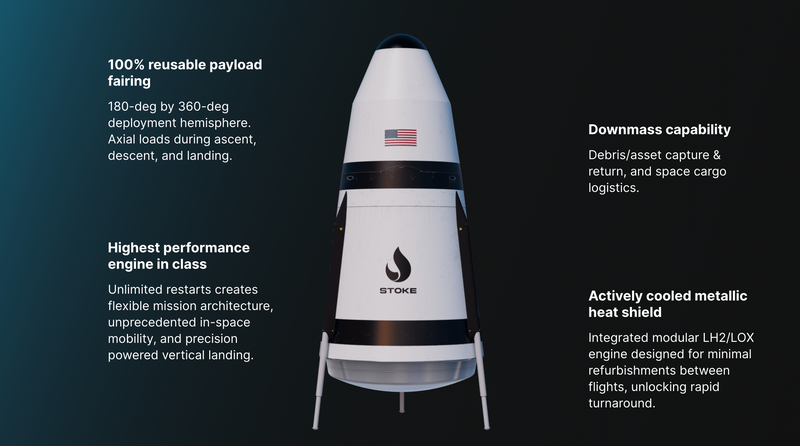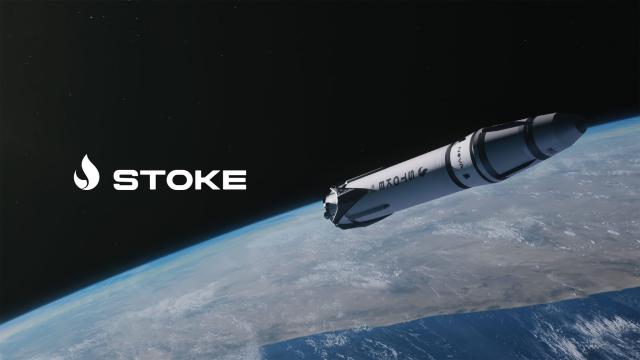Stoke Space’s goal to develop the world’s first fully reusable rocket just got a major boost, as a hefty new $US100 million investment pushes the aerospace startup’s total funding to $US175 million.
Nova.
Cool name, actually. The Stoke Space Nova rocket. Has a nice ring to it. Or should we want to be more specific, the fully reusable Stoke Space Nova rocket.
“Our vehicle designs build on the ideas and achievements of prior generations,” Stoke Space CEO Any Lapsa said in a press release. “The name Nova is a way to honour that past heritage while looking ahead to a very exciting future.”
Nova, of course, is derived from “novus,” meaning “new” in Latin. It’s also an astronomical term that describes the sudden, temporary increase in the brightness of a star due to an explosion on the surface of a white dwarf in a binary system. The term nova was historically used because, to ancient observers, it appeared as if a new star had suddenly emerged in the sky. It’s perhaps unfortunate that Stoke Space chose to name its rocket after a cataclysmic explosion, but I’m happy to ignore this naming faux pas—at least for now (I’m already imagining mean-spirited headlines should a future Nova rocket fail during launch, which hopefully will never happen).
The rocket doesn’t exist yet, but at least we now finally have a name for it. That the rocket could eventually come to life is now a more tangible possibility; Stoke Space, an aerospace startup co-founded in 2019 by industry veterans Lapsa and Tom Feldman, announced an impressive $US100 million Series B investment on Thursday. This latest influx of capital, which was spearheaded by Industrious Ventures alongside contributors such as the University of Michigan, Sparta Group, and Long Journey, takes the company’s total funding to a respectable $US175 million, according to the press release.

Stoke is seeking to develop a fully reusable second stage rocket, something that has yet to be achieved in the industry. Not even SpaceX, whose Falcon 9 upper stage remains expendable, has reached this milestone (while SpaceX successfully lands and reuses the first stage of the Falcon 9, the second stage is typically discarded and not recovered for reuse). Stoke plans to equip the upper of its Nova rocket—because we can call it that now—with a cutting-edge cooled heat shield.

Stoke recently pulled off a successful vertical takeoff and landing test flight on September 17 at its Moses Lake facility, showcasing the company’s unique hydrogen/oxygen engine, among other state-of-the-art features. During the 15-second flight test, Hopper2 launched to an altitude of 9 metres and touched down inside its planned landing zone.
Once Nova is ready to fly, Stoke will make use of the historic Launch Complex 14 at Cape Canaveral Space Force Station in Florida, renowned as the launch pad for NASA’s Mercury-Atlas 6 flight piloted by John Glenn in 1962. Stoke has secured exclusive rights for its orbital flights at this iconic site.
With the fresh funds in the bank, Stoke’s got a clearer runway. But let’s remember, the company is trying to pull off something no one’s done before. The next steps? A ton of testing and probably a few hiccups. Because, as we’re often reminded, space is hard.
Here Are The Cheapest NBN 50 Plans You Can Get Right Now
Whether you’ve got the need for speed or simply looking for a better deal, these are the best prices going right now for the NBN 50 speed tier.
